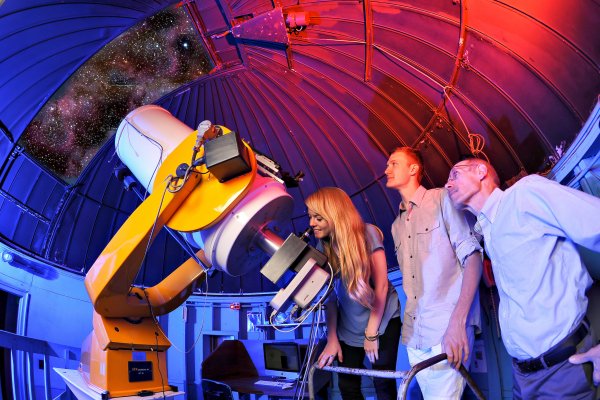Ready for Research
John Eric Tiessen
Class of 2016
Major: Physics
Minor: Humanities, Computational physics
Hometown: Elk Grove Village, Ill.
John Eric Tiessen ’16 spent the summer after his sophomore year staring at a computer screen. He wasn’t playing games, though — the images that were keeping his attention were of atoms and chemical bonds. Using a computer simulation, John Eric was attempting to discover a new catalyst.
In industries around the world, catalysts are used to accelerate chemical reactions. John Eric was looking for a catalyst to accelerate redox reactions, the kind used to burn petroleum fuels. The petroleum and chemical industries currently uses platinum to facilitate those processes.
“It is extremely expensive,” John Eric points out. So, under the direction of Professor Haiying He, John Eric began looking for a catalyst that could catalyze redox reactions quickly, efficiently, and cost-effectively.
Using computer models, John Eric created many different potential catalysts, each one made up of a heterostructure: a small cluster of four metal atoms deposited onto a substrate material, graphene. He started by assessing each of these sub-nano metal clusters to see which ones were the most stable, and therefore the most likely to exist in real life. Then he took those clusters and put them in contact with the graphene— a single layer of carbon atoms, to see whether the catalysts were effective.
“I loved the instant gratification of being able to run the simulations, see results, then adapt the clusters and try them again,” John Eric says.
He found that clusters of platinum or nickel atoms both showed strong binding strength with graphene, allowing for a large charge transfer. That quality made the heterostructures good possible catalysts for redox reactions, where they need to facilitate the charge transfer from the reductant to the oxidant. John Eric presented his results at the end-of-summer Celebration of Undergraduate Research, and further study to calculate the reaction pathways of the full redox reaction is underway.
John Eric says that the research has also given him a new outlook on has academic career.
“The physics program is very demanding, and over my sophomore year it was becoming progressively more and more difficult to keep up with my course load,” he says. “When I did this research, I got really excited about the work. That made it much easier to commit fully to the major and sustain my passion for physics.”
John Eric seeks to complete a Ph.D. and continue to work in computational physics — perhaps
designing simulations like the one he used for this project.
